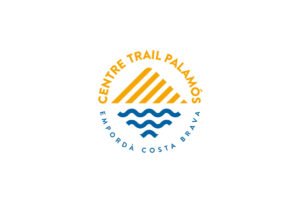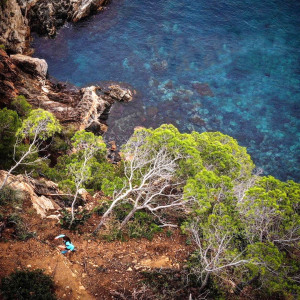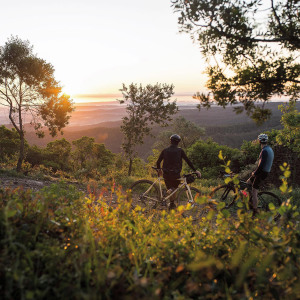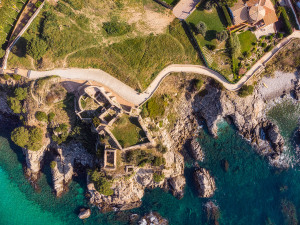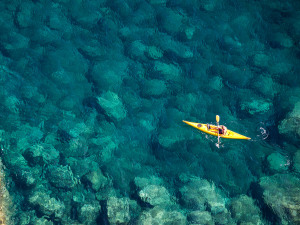ROUTES

An all-terrain natural space
Palamós is famous for its beaches and its delicious red prawns, but its marvellous natural surroundings, with trails and paths passing through woodland and mountains, are perhaps less well-known. PALAMÓS TRAIL CENTRE Empordà Costa Brava is an all-terrain natural space where you can do a wide variety of sporting activities, and it is an ideal way to discover the municipality of Palamós and the other municipalities with which we share this gift of nature.
COASTAL PATH ( CAMÍ DE RONDA)
You can explore the coastline of Palamós on the Camí de Ronda coast path. This starts at Platja Gran, heads towards el Pedró, follows the coast to the east and continues towards Cap Roig. You will find the marina, Cala del Morro del Vedell and els Pots and steps leading to Cala Margarida at the feet of Cap Gros. The trail leads to la Fosca beach, a shallow beach facing the south-east. The highlights around Castell are:
- The castle of Sant Esteve de Mar, which dates from the 12th–13th centuries and forms part of the origins of Palamós. It ended its days converted into a farmhouse.
- Cala S’Alguer, an urban miniature by the sea and a Cultural Asset of National Interest owing to its scenic value. This used to be a fishing settlement, and dates back to the fifteenth century.
- Castell beach: This site has stayed isolated and the unspoilt cleanliness of its landscape has been maintained by popular will.
- Iberian settlement of Castell: you can visit the archaeological remains at this Iberian site (6th century BC to 2nd century AD)
THE BELL-LLOC VALLEY
The valley of Bell-Lloc is nowadays a natural area of great beauty, covered with holm oak and pine woodland watered by rivers and seasonal streams that are home to all sorts of animals and it has mysterious idyllic corners. However, until the middle of the 20th century, the valley was intensely occupied by people. The resources extracted from it supported a large community and generated many activities connected with the natural environment.
But the world changes quickly and this valley, like the rest of the Gavarres, could not keep up with the economic and social changes of the last century, especially industrial ones, and so it was gradually abandoned until the woods took control of the area, the special witness to a slow and simple way of life.
Now we invite you to explore it … And while you let yourself be absorbed by this slow, silent and tranquil world, observe your surroundings and discover in every corner of the valley a human history, the history of a type of work, a way of life that has now disappeared, but which was the way people in this region lived for centuries…
LITTLE TRAIN ROUTE , GREENWAY “RUTA DEL TREN PETIT, VIA VERDA”
On 23 March 1887, the little train made its first journey connecting Palamós to Girona passing through la Bisbal de l’Empordà.
The Little Train Route now follows the old route of this railway. This greenway is 10.7 kilometres long and connects Palamós to Palafrugell. Along this route, you can admire the characteristic landscapes of the Empordà while crossing the Aubi plain, which is surrounded by the Gavarres mountains and the Begur mountains.
Its simplicity and low difficulty make the Little Train Route an ideal family outing, either by bike or on foot.
WALKING ROUTE AROUND THE OLD TOWN OF PALAMÓS
The bay of Palamós – one of the deepest in the western Mediterranean – and its natural harbour, turned this area into a royal town in the thirteenth century. These characteristics meant that the municipality was attacked and destroyed many times.
Despite this, Palamós still preserves lots of evidence of the essence of its past. While walking through streets you will follow the old town walls. Touch the remaining stone walls, and feel the essence of old Palamós.
But history is not always easily visible. So we invite you to discover our past by reading the information panels found at several locations. These panels open the doors to the heritage of Palamós and enable you to discover moments in the life of all of the people who have made the municipality a rich, lively and welcoming setting.
TRUMAN CAPOTE ROUTE
This literary route describes the time the famous American writer Truman Capote spent in Palamós, where he settled between 1960 and 1962, looking for the tranquillity he needed to write one of his best-sellers, “In cold blood”.
The route describes what this literary genius and eccentric celebrity of the period might have seen and done, the people he might have encountered in Palamós, where he might have gone, what he liked, his eccentricities…, a route explaining the spaces in Palamós that Capote visited.
For more information about the route, you can consult the Fishing Museum of Palamós.
